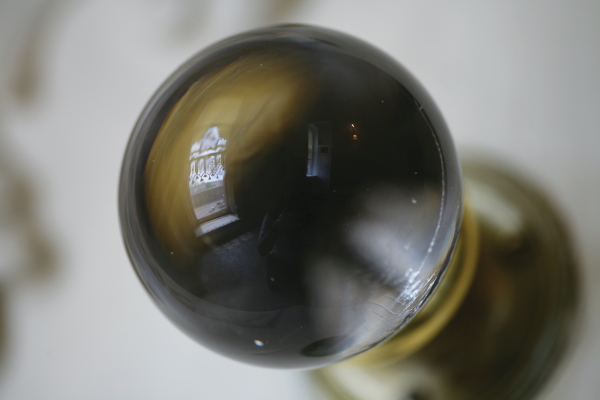By Jodi Rich-Bartz
Americans in the 1890s had many new products, inventions and ideas influencing their daily lives as the tumultuous decade closed the 19th century. One of these new thought processes was known as Victorian Germ Theory and it would have a clear impact on the Pabst Family as they designed and built their mansion at 2000 Grand Avenue between June 1890 and July 1892.It should be easy for us living through the Covid-19 pandemic to understand how appealing it would have been to Captain and Mrs. Pabst to have a home where the materials used in its design would be considered more sanitary, easier to wipe down and keep germ free to help prevent disease. So, what were the options available to help reduce the likelihood of illness within the household? To all Americans improved personal hygiene was part of the answer, but wealthy families like the Pabsts were also able to take it one step beyond.
The Pabst Mansion was well situated to incorporate germ theory design into the home because of larger factors already in place which included city sewers, central heat, hot and cold running water, perfection of indoor plumbing and pipes, and the invention of flush toilets being available in Milwaukee’s affluent Grand Avenue neighborhood, but what did the Pabst family do specifically within the Mansion? First, they incorporated a large number of bathrooms (10) which meant that there was far less sharing among members of the household, and thus less transfer of germs. These bathrooms also featured holders for the newly available Scott toilet tissue on a roll (debuted in 1890) that could be used and then flushed away.

The Pabst Mansion bathrooms parted ways with the more furniture looking wood encased tubs, toilets and sinks of 1880s bathrooms instead placing wall tiles from the American Encaustic Tile Co. and porcelain bowls, marble and fixtures for the sinks from the J.L. Mott Co. in the space. Gone were the heavily textiled walls of the past decades to be replaced with painted surfaces above the wood trim separating the tiles, and in the case of the Pabst family a beautiful decorative stencil border at the top where the wall meets the ceiling, often complementing the decorative tile design.

The floors of the new 1890s germ theory bathroom saw a departure from wood to white hex tile with marble slabs under sinks and claw foot tubs (under toilet basins as well at the Pabst Mansion) to catch water and condensate. These new materials were more durable, waterproof and easier to wipe down and keep clean. Of course, let us not forget that this is still the Gilded Age so while these hygienic changes served a utilitarian purpose, they still had to be appealing to the eye so toilets often had intricate embossing, glazing and gilded decoration, sinks had imbedded soap dishes and exposed decorative pipes, bath tubs had wood trimmed edges as well as stained glass windows for privacy, and finally lest we at the Pabst Mansion not forget the glass door knobs in the bedroom and bathroom of the Pabsts eldest grandchild Elsbeth!

Once again we tip our hats to Captain and Mrs. Pabst for incorporating the newest and most modern features and ideas into their home!

